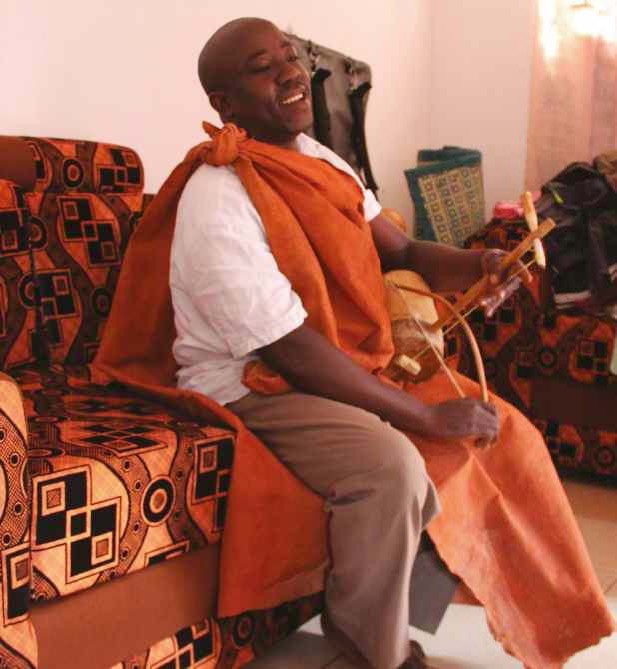
Iam in a cab driving out of central Kampala, Uganda – a country that straddles the equator in east Africa. As we roll into the city outskirts, smooth grey roads turn bumpier and iron-red, and roaring engines mix with the squawks of tropical birds. Stalwart buildings become shacks and shelters; brightest green banana, jackfruit and papaya trees tower above us; and crowded streets of boda bodas (mopeds), cars, minibus ‘taxis’ and people carrying precariously balanced sacks, canisters and other wares give way to pastoralists, goats, longhorned cattle, and children excitedly yelling ‘Muzungu! Muzungu!’ (‘wanderer’, or ‘white person’) as we swerve, slow and race on into hidden potholes and clouds of red-orange dust. After several wrong turns and phone calls, we spot a grinning man standing smartly dressed by the roadside.the directs us on to an uneven track, past muddy houses and chicken-illed yards, until we reach a rust-coloured abode with drapes luttering vibrantly from the door and windows. Inside, we settle down on bold-print sofas, beneath traditional musical instruments that hang down from the whitewashed walls.
The man is musician Albert Bisaso Ssempeke, who plays the endingidi, a one-stringed bowed iddle indigenous to Uganda. It is of similar length to a violin, its body made from a cylinder of wood or cow horn, with animal hide stretched over the cavity and ixed in place with nails or pegs. A thin pole made of wood or horn, often topped with a goat- or monkey-hair tassel, punctures the soundbox behind the hide, sticking out by a few centimetres from the bottom end and a forearm’s length from the top, and bored through with a tuning peg. Its single nylon string stretches down over a stout bridge on the instrument body to a button at its base, and is bowed like a small cello balanced on the knee, using an arched, lexible piece of wood tied with another string, also of nylon. It is played in joyful, upbeat music, to emulate the human voice.